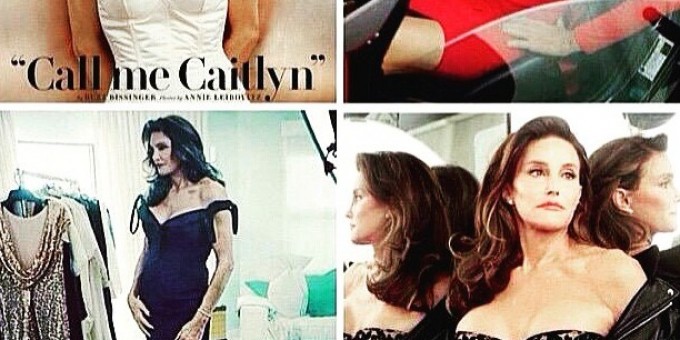
#callmecaitlyn and contemporary trans* visibility
It seems the media is discussing transgender people more than ever. This has the potential to promote social justice using celebrity faces as potent symbols for gender diversity, transgender rights, and more. They bring awareness and help expand the public’s vocabulary regarding greater gender possibilities.
Although this is good news overall, public attention and support must extend and translate into legislation and rights. Paradoxically, trans* celebrities may be bringing attention to trans* issues and obscuring diversity within trans* communities. Simply put, not all transgender people are being celebrated. (We use trans* to denote the diversity of trans identities.)
In May 2014, Time put a transgender individual, Laverne Cox, on its cover. Just under a year later, Caitlyn Jenner came out as a transwoman, featured on the June 2015 cover of Vanity Fair alongside a story titled “Call Me Caitlyn.” Quickly, the hashtag #CallMeCaitlyn took social media by storm, and Caitlyn Jenner broke the record for fastest accumulation of one million Twitter followers (four hours, beating out President Barack Obama’s @POTUS record).
Jenner’s case is interesting precisely because of her achievements and notoriety as Bruce. As Bruce, she was a successful Olympic decathlete, a status cast as the pinnacle of human athleticism and masculinity. In fact, when Jenner won gold in 1976, there was no women’s decathlon event. Now featured on the cover of Vanity Fair, Caitlyn has arguably been held up as a gold standard of femininity. One person has reached some of the greatest heights of gendered status as both a man and woman.
Jenner is also a cross-generation celebrity—known to previous age cohorts as a sports hero, and now popular as a member of one of the most visible and followed contemporary celebrity families in the U.S. Jenner’s celebrity invites gossip, but it might also prove a powerful way to start a discussion regarding gender and social justice issues related to gender, bodies, and civil liberties.
Through Jenner’s transition, the American public is becoming familiar with transgender people, problems, and politics. For example, in her reality show, I Am Cait, she not only shares her experience but also gives attention to the experiences and knowledge of others, including transgender youth and long-time activists like Kate Bornstein and Jennifer Finney Boylan.
Yet existing research primarily paints a bleak picture of the experiences and lives of transgender people. Transgender youth suffer from depression at rates much higher than the general population, and they are at a much higher risk of suicide, homelessness, and homicide. The National Transgender Discrimination Survey found that about 1 in 4 trans* people have lost a job due to bias and discrimination, 1 in 2 experience harassment at work, and 1 in 5 were evicted from or denied housing as a result of their gender identity. Those transgender people who are least likely to experience the most damaging consequences are those best able to approximate heteronormative, cisgender ideals. This often means demonstrating feminine and masculine beauty and body standards associated with being “cis,” or having a gender identity that is consistent with the one assigned to them at birth. The cultural standards the transgender people we most readily encounter in the media are less easily achieved—and not necessarily desired—by everyone identifying as trans*gender.Moreover, while #CallMeCaitlyn was trending, #Occupotty and #TransLivesMatter received much less attention. #Occupotty began in reaction to proposed “bathroom bills” seeking to legally mandate that individuals use the public restroom facility associated with their assigned sex at birth. Bathroom bills are most often proposed and justified by playing on inaccurate stereotypes of transgender people as sexually deviant and potentially violent. Indeed, they are generally proposed as safety measures, though transgender women and men are much more likely to be the victims than the perpetrators of harassment and assault. The fears these bills play on are manufactured, but powerful. Fear of deviant men invading girls’ bathrooms, for instance, led a Houston gay rights ordinance to fail—by a wide margin—in a public referendum last fall.
The public celebration and recognition of transgender people is a start, but it has not yet been matched by achievements in gender equality and diversity. There are limits to what celebration can do. Now we must work toward the legal and institutional changes required to turn ideals into policy.

Comments 1
Pam
May 18, 2016"Now featured on the cover of Vanity Fair, Caitlyn has arguably been held up as a gold standard of femininity. One person has reached some of the greatest heights of gendered status as both a man and woman." These statements are a tiny bit farfetched don't you think? Cait wins both the femininity and masculinity crowns?